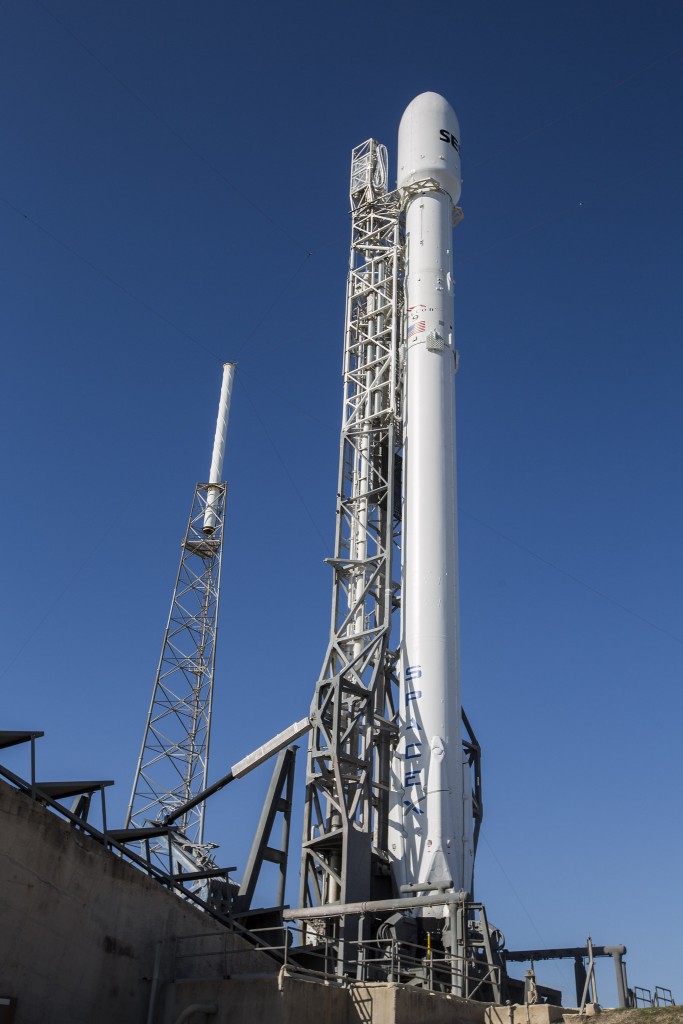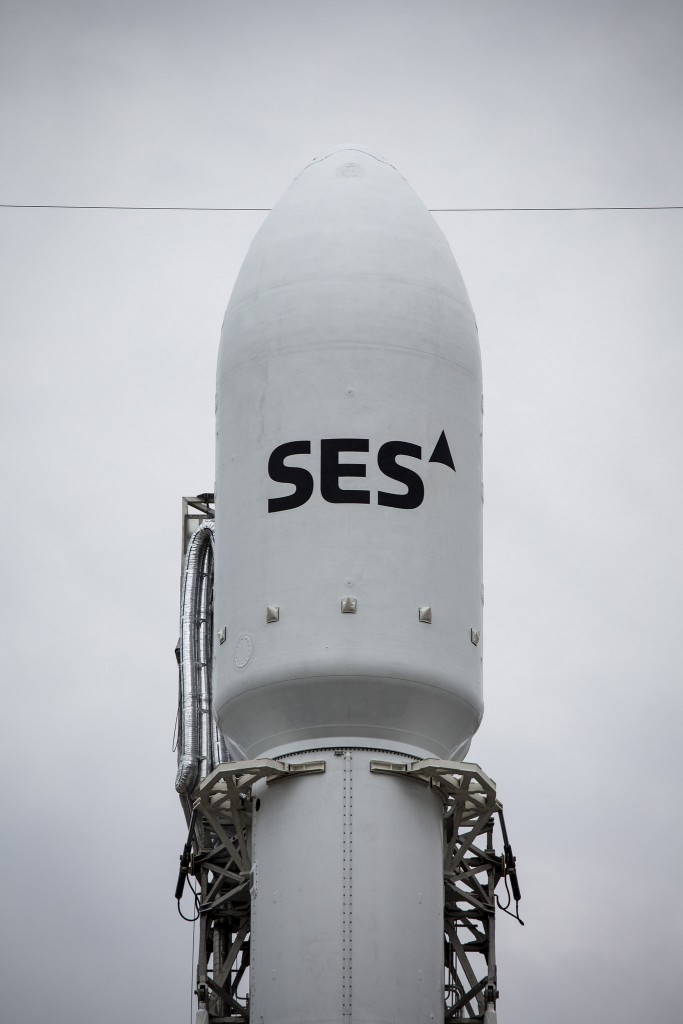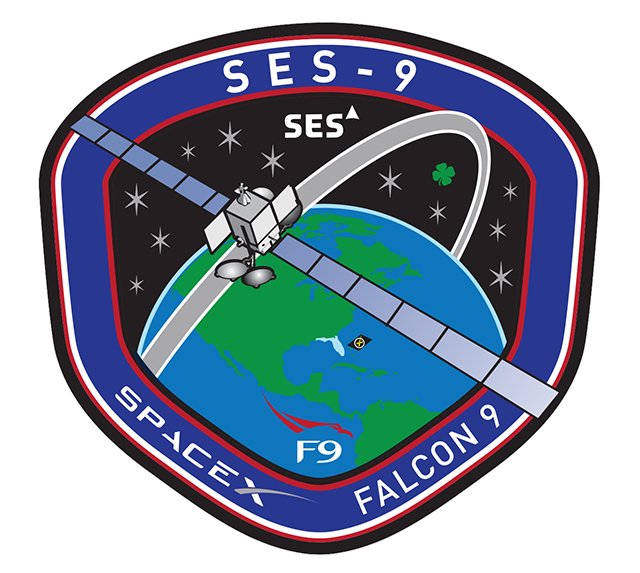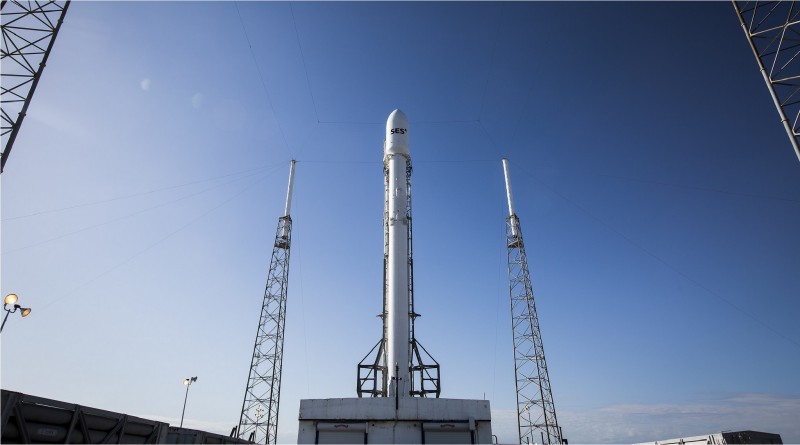Falcon 9 to remain grounded until Friday due to Strong Upper Level Winds

The SpaceX Falcon 9 rocket carrying the SES-9 communications satellite remains grounded as the long-awaited launch is now looking at a Friday target after being delayed on Tuesday due to unfavorable conditions in the upper atmosphere.
The launch suffered back to back scrubs on Wednesday and Thursday and a dramatic launch countdown on Sunday ended with a shutdown of the nine Merlin engines split seconds from liftoff.
SpaceX completed a Flight Readiness Review on Monday to evaluate the status of the Falcon 9 launch vehicle after Sunday’s aborted ignition that had been caused by one of the engines ingesting a helium bubble which tripped a low-thrust alarm and prompted the flight computers to shut down the engines. Prior to the aborted ignition, Falcon 9 had to endure a 34-minute countdown hold due to a ship entering the downrange safety area, causing the sub-cooled Liquid Oxygen in its tanks to warm up which eventually resulted in the release of gaseous helium and the shutdown of the Merlin engines.
With no issues present on the 70-meter tall Falcon 9 rocket, SpaceX decided to press into countdown operations again on Tuesday for the fourth attempt to get SES-9 into orbit. Three hours prior to the opening of Tuesday’s launch window, the Launch Team was forced to call a delay due to extreme wind shear between 8 and 12 Kilometers in altitude, showing a peak wind speed of 70 meters per second. Upper Level Winds need to be looked at carefully from a flight dynamics perspective to ensure forces encountered by the ascending launch vehicle do not exceed its structural limits.

The observed wind shear is expected to remain in place for the next two days and SpaceX therefore decided to push the launch to Friday when winds aloft are likely to be more favorable.
Pending calmer winds in the upper atmosphere, Falcon 9 is aiming for a launch just after sunset, flying into illumination a short time after lifting off with its engines delivering nearly 700 metric-ton-force of thrust at launch.
The nine Merlin 1D engines on the first stage will fire for two minutes and 36 seconds, accelerating the vehicle to a speed of over 2.5 Kilometers per second. Following separation, the first stage will embark on its daring return – attempting a high-risk return that is not expected to succeed given the energy of the booster at separation and severely limited reserves of propellant which will not permit the vehicle to fly a ‘standard’ return profile with three burns as part of the descent.
Instead of conducting a boost-back maneuver, the first stage will remain on a ballistic trajectory and home in on the Autonomous Spaceport Drone Ship, stationed 660 Kilometers from Cape Canaveral. Because the first stage can not slow down ahead of re-entry, it will have to endure extreme forces and temperatures not seen in previous attempts including the successful booster landing in December.
Making its most torturous re-entry to date, the booster will deploy its four actuated grid fins to guide itself to the ‘Of Course I Still Love You’ Drone Ship followed by a landing burn that will hopefully result in the first stage coming to rest on its four landing legs to mark SpaceX’s first successful booster landing at sea.

The second stage will fire its MVac engine for a little over six minutes to reach a Low Earth Parking Orbit, shedding the large payload fairing along the way, around three minutes and 42 seconds into the mission. Once in orbit, the second stage will coast for 18 minutes to be able to fire its engine again when passing the equator so that the high-point of the insertion orbit is also located over the equator, easing the process of maneuvering SES-9 into Geostationary Orbit.
The second burn of the MVac engine is expected to commence 27 minutes after liftoff and last 48 seconds, though the second stage has been programmed to burn as long as possible, cutting off when propellants reach a minimum residual level.
This is hoped to deliver an additional boost in speed by firing for a few seconds longer than for a guided shutdown, lifting the orbit’s apogee to supersynchronous altitude over 39,000 Kilometers. The actual insertion orbit will depend on the second stage’s performance which is driven by the mass of fuel on board, explaining why SpaceX is putting a priority on propellant temperatures.
SES-9 will be sent on its way 31 minutes after liftoff, ready to begin a 45-day climb into Geostationary Orbit to reach its position at 108.2°E from where it will deliver TV and data services to millions of households in the Asia Pacific Region as well as mobile customers at sea and in the air.

